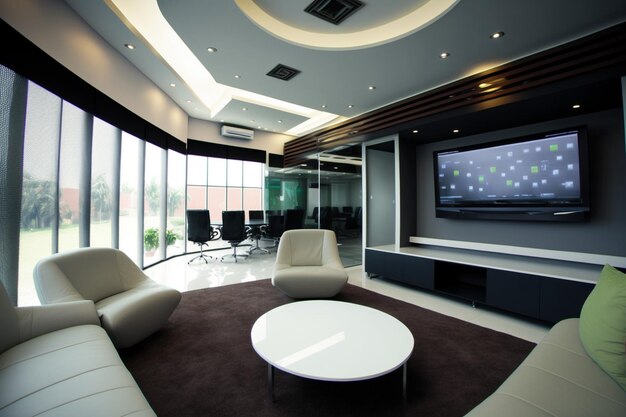
Corporate Interior
Creating a Corporate Interior design that is both functional and aesthetically pleasing is essential for businesses to foster a productive and inspiring work environment. In this blog post, we'll explore key principles and ideas for designing corporate interiors that promote professionalism, collaboration, and employee well-being.
Consider the pros and cons of open-plan offices versus traditional cubicles. Balance the need for collaboration with the importance of private workspaces. Design flexible spaces that can adapt to different work styles and tasks. Incorporate movable furniture and modular partitions for versatility.
Use the company's branding colors strategically throughout the space to reinforce the brand identity. Start with a neutral color palette for walls and floors to create a timeless and adaptable backdrop. Then, add pops of corporate colors through accents like furniture, artwork, and accessories.
Prioritize ergonomic furniture to ensure the well-being of employees. Adjustable chairs and sit-stand desks can enhance comfort and productivity. Consider custom-designed furniture to match the specific needs of your corporate space. Tailor furniture to maximize functionality and aesthetics.
Incorporate as much natural light as possible. It not only reduces energy costs but also positively impacts mood and productivity. Provide task lighting, such as desk lamps or under-cabinet lighting, to enhance visibility and reduce eye strain.
Ensure that the space is equipped with the latest technology, including both wired and wireless connectivity for seamless communication and collaboration. Design high-tech conference rooms with video conferencing capabilities for remote meetings.
Incorporate indoor plants to improve air quality and create a calming atmosphere. Use natural materials like wood and stone, and incorporate nature-inspired patterns and artwork to connect employees with nature.
Create designated meditation or relaxation areas to support mental well-being. Design with sustainability in mind by using energy-efficient lighting, appliances, and HVAC systems. Implement recycling and waste reduction programs throughout the office.
